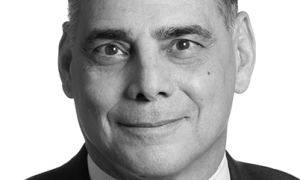Vantage Vista Drive was a quiet residential street one day, a disaster zone the next. Last month, the Waldo Canyon fire scoured its homes to the ground, leaving little more than blankets of white ash and a string of nails where walls once stood.
That was in Colorado Springs. It could have been most anywhere. No community knows when it may face disaster. But every community should prepare for the ultimate test: dealing with destruction.
One institution that helps leaders think through what might be required to cope with catastrophe is the Foundation for Research in Economics and Environment, or FREE.
The Bozeman, Mont., foundation last week welcomed two dozen community faith leaders from around the country to a weeklong workshop in dealing with the aftermath of economic collapse. Participants pondered the consequences of boom-and-bust economies, the lessons of mining towns and oil rushes where populations exploded and collapsed, leaving behind massive unemployment, terrible environmental degradation and the loss of hope for the future.
Why faith leaders? FREE recognizes that clergy do much more within their communities than preach sermons and bury parishioners. Indeed, faith leaders are among the most critical "first responders" within any community.
Typically, those most at risk in disasters are those already most vulnerable: children, the elderly, the disabled, the poor, the homeless. Faith leaders are deeply sensitive to the needs of these groups. They also hold unique positions of trust and confidence. Their communities tend to heed their voices, even above the chaos and confusion that follows a catastrophe.
Faith leaders can be especially effective first responders due to their leadership style, as well. For example, they know how to get people to talk to one another -- a necessary first step toward collaboration and cooperation. In the wake of a disaster, few skills are more prized than that.
After the 2010 Deepwater Horizon oil spill, collaboration was hard to come by. The Gulf Coast struggled with the cleanup. In part, that was because oil spills are governed by federal regulations different from those established for other large-scale disasters. Normally, the federal government's disaster recovery activities are extended in support of state and local governments. But oil spill regulations required BP to work directly under the supervision of the federal government, cutting state and local officials out of the loop.
In coastal communities most affected by the oil spill, the lack of effective collaborative action greatly prolonged the dislocation, suffering and uncertainty. Friction, distrust and frustration prevailed for weeks. The situation improved only gradually, as collaborative initiatives -- like sending liaison teams to state and local officials, and setting up forums with community leaders -- were put in place.
When towns like Colorado Springs awaken to find whole neighborhoods gone overnight, the shock can be as devastating as the physical damage. Remediation and recovery require a vision for the future.
It is often not possible or even desirable to just try to put things back the way they were. Communities need to pick a future, one that gives hope, confidence and reassurance for moving forward.
Though faith leaders may not be experts in economics, infrastructure, housing, the environment or the many other issues that have to be addressed, they are experts in bringing people together, encouraging listening, caring and sharing. Getting these leaders ready to serve in the wake of the worst of disasters is a worthy endeavor.
Examiner Columnist James Jay Carafano is a senior research fellow for national security at the Heritage Foundation.
First appeared in The Examiner

